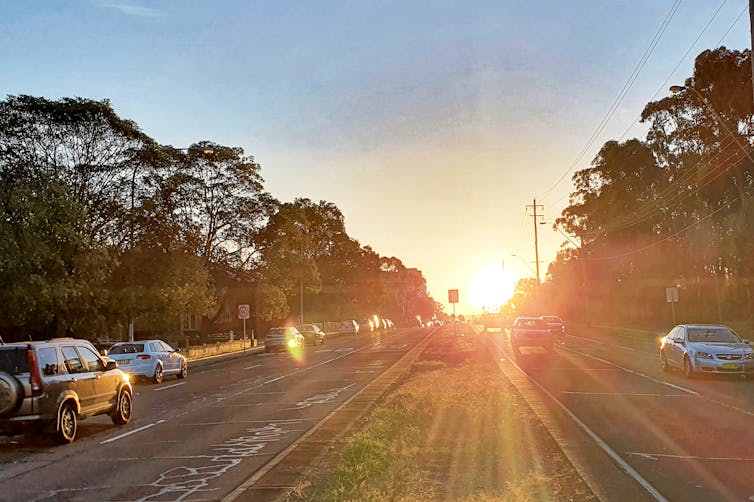Planning shake-up needed to help those whose job it is to make NSW a healthy place

Nicky Morrison, Western Sydney University; Gregory Paine, UNSW; Ryan van den Nouwelant, Western Sydney University, and Susan Thompson, UNSW
You’d be forgiven for asking if living in some parts of New South Wales is actually good for your health. In the past 18 months Australia’s most populous state has been challenged like never before. Unprecedented bushfires, a global pandemic and recent flooding have posed huge questions, which sit alongside other 21st-century challenges such as increasing loneliness, rising levels of obesity and unequal access to affordable, healthy food options.
Research has shown where you live shapes how easy it is to make social connections, keep physically active, enjoy green spaces and buy healthy food. The evidence is clear. But how do we create places that help promote good health and well-being for all?
Read more: Is your 'experience diet' making you unwell?
In line with recent reforms, the NSW government has put delivering healthy and thriving communities at the heart of a new consolidated Design and Place State and Environmental Planning Policy.
According to the government’s planning website, the policy will apply to the creation of places at all scales: “from precincts to significant developments and buildings, to infrastructure and public spaces”.
But our newly published research shows it’s not easy to deliver healthy places. In particular, it shows the practitioners responsible for making healthy places – from designers and planners to community service providers – just don’t have the regulatory framework they need to achieve the results now demanded.
Our report highlights the stark realities of implementation falling short of rhetoric. Those designing this policy need to understand the realities built environment practitioners face.
Read more: With health assuming its rightful place in planning, here are 3 key lessons from NSW
This study was prompted by similar research by the UK Design Council. That study found a critical gap between aspirations for places that support healthy living and the actual delivery of those places. We sought to find out whether built environment practitioners in NSW experience similar problems.
What did the study find?
We conducted a state-wide survey to better understand any barriers, as well as enablers, these professionals face in making healthy places and how any challenges can be overcome.
Some 350 practitioners across Greater Sydney and regional NSW responded, just ahead of the 2020 global pandemic. Forty-two took part in a follow-up workshop in late 2020 to further explain their key needs, priorities and recommendations.
The participants were heavily drawn from the strategic planning profession and the local government sector. Nearly half had more than ten years’ experience.
Six out of ten said they incorporate health and well-being into their everyday language and in documents they deliver. However, we found a clear lack of interaction across the different professions involved in place-making, as well as with those in health promotion.
Surprisingly, only one in five directly engage with the local community about how to improve people’s health in their area. Yet collaborative work and local insights are crucial for the success of any place-making project.
We asked what barriers professionals faced to ensure delivery of healthy places against other competing interests. The most common responses (identified by over two-thirds of those surveyed) were:
a lack of regulatory requirements
a lack of clarity as to who is responsible
developers lack motivation to provide healthy places of their own accord.
But the greatest barrier of all (cited by 68%) was the lack of prioritised budgets for making healthier places.

We undertook the study with the South West Sydney Local Health District, with funding from Maridulu Budyari Gumal and support from Planning Institute Australia NSW and the Heart Foundation.
Public health needs must shape policy
As the government develops its new policy, it can be bolstered by the call from our respondents for stronger statutory mechanisms. A strong consensus was that only through stricter planning regulations and policy frameworks will health outcomes finally be integrated into planning, urban design and construction standards.
Read more: Level-crossing removals: a case study in why major projects must also be investments in health
Another pertinent finding was that government guidance is not widely consulted. Many resources are available, but very few respondents regularly made use of them or recommended them to colleagues.
A notable exception was the NSW government architect’s Better Placed design policy – 69% referred to and recommended it. This bodes well for the new policy, with the government architect to oversee its delivery.
Our research has a bearing on two key government needs and aspirations:
the creation of better places to live and work
a progressive reduction in future public health costs through supporting healthy population lifestyles, as suggested in a recent Treasury background paper for the next NSW Intergenerational Report.
The final policy is due to go on exhibition later in 2021. This will allow for further public feedback.
We advocate that everyone takes up this opportunity. Let us properly shape this review and help ensure NSW is truly a healthy state to live in.
The health of individuals and communities needs to be strongly embedded in state legislation. COVID-19 has reinforced the importance of putting health at the centre of all that we do, and in all states and territories.![]()
Nicky Morrison, Professor of Planning, Western Sydney University; Gregory Paine, Research Officer, City Futures Research Centre, City Wellbeing, UNSW; Ryan van den Nouwelant, Lecturer in Urban Management and Planning, Western Sydney University, and Susan Thompson, Professor of Planning and Head, City Wellbeing Program, City Futures Research Centre, UNSW
This article is republished from The Conversation under a Creative Commons license. Read the original article.
Jobs Just For You, The Planning Professional
Our weekly or daily email bulletins are guaranteed to contain only fresh employment opportunities